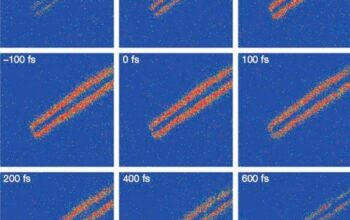The intersection of physics and cinema has long captivated audiences, enabling narratives that oscillate between scientific plausibility and imaginative extremes. The film “Deep Impact,” released in 1998, epitomizes this confluence, presenting a narrative that transcends mere entertainment and delves into the profound implications of astrophysical phenomena on human existence. The film revolves around the impending collision of a comet with Earth, engendering a duality of fear and fascination—the perennial tension between cosmic insignificance and the human propensity for survival. This ambivalence mirrors a broader cultural phenomenon wherein physics serves not merely as a backdrop, but as an essential character within the cinematic narrative framework.
At its core, “Deep Impact” serves as an emblematic case study of the cinematic representation of astronomical events. The film’s narrative structure is meticulously crafted, intertwining emotional arcs with scientifically grounded premises. The comet, designated as Wolf-Biederman, stands as a metaphorical representation of existential dread. The potential extinction of humanity prompts an introspective inquiry into our place within the cosmos. Such themes resonate with audiences who grapple with their own mortality, evoking an intrinsic fascination with cosmic events that dwarf human life in scale and significance.
One of the salient aspects of “Deep Impact” lies in its commitment to scientific accuracy, a feature that distinguishes it from other disaster films of the era. The depiction of the comet is grounded in realistic physics; its trajectory, speed, and potential impact are presented with a level of detail that invites scrutiny and respect. The cinematic portrayal of the comet’s approach adopts a quasi-documentary style, fostering an informed viewer’s engagement. This juxtaposition of rigorous scientific principles against a narrative framework invites a broader discussion of the responsibilities of filmmakers in accurately portraying complex scientific concepts.
Moreover, the film’s portrayal of human institutions grappling with the impending disaster invites critical examination. The activation of governmental and scientific responses, such as the mobilization of NASA resources and international collaboration, reflects a collective yearning for heroism in the face of existential threats. This response speaks to an innate human desire for agency, fostering a sense of hope amidst despair. The film articulates the notion that even in the face of overwhelming odds, the collective efforts of humanity can yield transformative outcomes, a theme that resonates deeply within the human psyche.
However, the film’s allure extends beyond its scientific veracity and narrative structure; it taps into a broader cultural obsession with doomsday scenarios. The fascination with planetary threats, whether through astrophysical events or human-induced catastrophes, reveals an underlying anxiety about the fragility of civilization. This anxiety permeates contemporary discourse, where scientific advancements in fields such as astrophysics and climate science amplify existential concerns. “Deep Impact,” therefore, is not merely a narrative about a comet; it serves as a reflection of societal anxieties regarding technology, nature, and humanity’s tenuous grasp on survival.
Exploring the implications of “Deep Impact” extends into the philosophical realm. The film provokes contemplation on determinism versus free will. As characters navigate the dire circumstances leading to the comet’s impact, viewers are invited to ponder whether humanity can alter its fate. Such dilemmas echo through the annals of scientific inquiry, wherein the unpredictability of cosmic events is juxtaposed with the deterministic laws governing physical phenomena. This tension invites discourse on the nature of existence itself, challenging viewers to confront the limits of human agency within an indifferent universe.
The aesthetic execution of “Deep Impact” further accentuates its engagement with physics. Cinematographic techniques employed in illustrating the comet’s trajectory utilize a blend of computer-generated imagery and practical effects that bring a palpable realism to the film. Such visual representations serve a dual purpose; they not only captivate audiences through spectacular imagery but also educate viewers on the stark realities of astronomical phenomena. The immersive experience is designed to elicit visceral reactions, bridging scientific understanding with emotional impact.
In conclusion, “Deep Impact” serves as a poignant reflection of humanity’s relationship with the cosmos—a complex interplay of fear, fascination, and hope. Its depiction of astrophysical events transcends entertainment, engaging viewers in critical dialogues about survival, agency, and the relentless march of time. As audiences grapple with the implications of such narratives, the film invites introspection into the nature of existence and humanity’s place within the vast, uncaring universe. Hollywood’s dramatization of scientific phenomena, while often simplified for mass consumption, possesses an inherent capacity to educate and provoke meaningful discourse. This phenomenon reaffirms the assertion that film, when imbued with scientific principles, can transcend its medium to become a vehicle for reflection on the grand narrative of existence itself.










